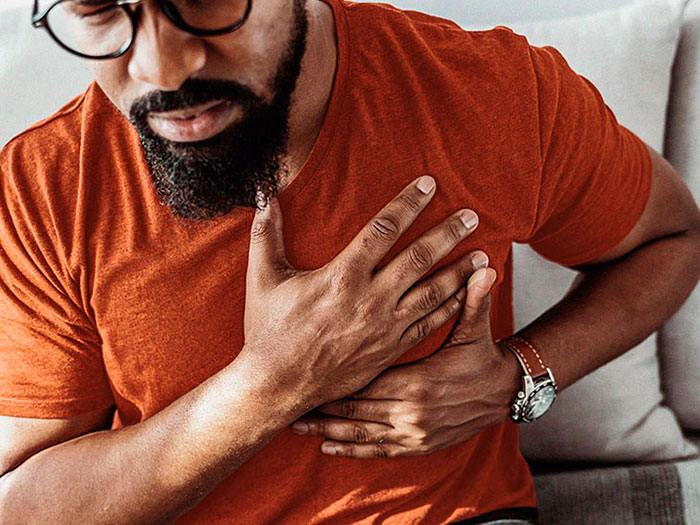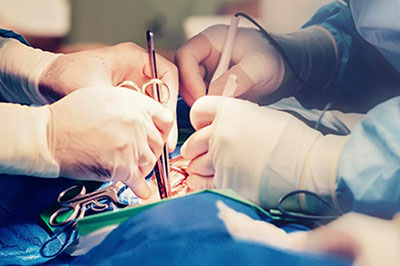
Heart attack/ ischemic heart disease?
What is heart attack/ ischemic heart disease?
You get ischemic heart disease when there is narrowing or blockages in the artery that supply the heart muscles . These arteries are called as coronary arteries.
What causes the narrowing of the arteries?
The most common cause for the narrowing of coronary arteries is atherosclerosis. Atherosclerosis is the accumulation of cholesterol, fatty substances, calcium and fibrin in the wall of the arteries. It might progress to cause narrowing and ultimately complete blockage of the artery.
What are the risk factors for coronary artery disease?
The risk factors can be classified into modifiable and non-modifiable:
Non-modifiable:
Age: The risk of ischemic heart disease increases after 35 years of age.
Gender: Men are at increased risk compared to women. The lifetime risk of developing Coronary artery disease in men and women after 40 years of age is 49% and 32%, respectively.
Ethnicity: Blacks, Hispanics, Latinos, and Southeast Asians, are ethnic groups are at higher risk of Coronary artery disease.
Family history: Patients with first degree relatives having Coronary artery disease at younger than 50 -55 years of age, have an increased risk Coronary artery disease.
Modifiable:
- High blood pressure ( hypertension )
- High bad cholesterol levels ( hyperlipidemia )
- High blood sugars ( diabetes mellitus )
- Excess body weight ( obesity )
- Smoking
- Poor diet
- Sedentary life style
What are the symptoms?
- Pain: Chest pain (angina) described as heaviness, tightness, pressure, aching.
Some might describe pain as burning, numbness, fullness, squeezing or a dull ache.
The pain could felt in the left shoulder, arms, neck, back or jaw, in between the shoulders , belly or central chest pain - Feeling tired.
- Dizziness, lightheadedness.
- Some might complain of profound Nausea, gastric discomfort or heart burn.
- Some might just complain of cold and unexplained sweating
- Some patients might have very atypical complaints. Hence its important to see the doctor if you develop any new symptoms.
Investigations:
There are may tests that can be under taken to diagnose the heart problem. If you have any heart related symptoms, you should visit the doctor to determine which is the best test for you at that time. Unnecessary testing or wrong testing could cause more harm than good.
- Electrocardiograph tests (ECG): Plain ECG is a basic test that can be done any time .It could pick up if you have acute heart attack. How ever, normal ECG doesn’t mean you do not have heart related problems. This test can detect heart attack and heart rhythm issues.
- Exercise stress tests: This is a test where you would be asked to run on a treadmill while the ECG is recorded. It is done to determine how your heart functions under stress. Normal stress test or negative stress test doesn’t mean you do not have heart problem. While a positive stress test is suggestive that you are more likely to have heart problem.
- Pharmacologic stress test: In this test ,instead of using the treadmill , some medicines are used to mimic the cardiac stress. These medicines increase our heart rate and BP.
- CT Coronary angiogram: This is a CT scan which measures the amount of calcium in the walls of your coronary arteries. It also help to identify the blockages in the heart arteries. It also gives a good picture of the arteries of the heart.
- Echocardiogram: This test is done to look at the structures of your heart are working and the overall function of your heart. It can identify valve problems and any defects present since birth. It gives 2D/ 3D images of the heart.
- Blood tests: There are may blood test that can determine acute heart attack. Blood test like Troponin T and troponin I, CPK MB help if identify acute heart attack. Blood test like lipid profile helps to identify if you have higher bad cholesterol which makes you at higher risk for heart disease.
- Nuclear imaging: This test is similar to a CT scan but involves a radioactive dye. It helps to identify if the heart muscles are viable.
- Angiogram: Uses contrast dye to view arteries of the heart and detect blockages in the coronary arteries.
What is the treatment of blockages in the artery?
the treatment depends on multiple factors like your age; the type , position and number of blockages. It also depends on if you have diabetes. Patients with diabetes have shown to have better long term results with bypass surgery.
Angioplasty or stenting is a also shown to have good results. Discuss with your doctor about the treatment plan.
What is bypass surgery
Heart bypass surgery, or coronary artery bypass graft (CABG) surgery, is used to improve blood flow to your heart if you have ischemic heart disease. A surgeon uses blood vessels taken from another area of your body to bypass the blockages in the arteries. Coronary bypass surgery redirects blood around a section of a blocked or partially blocked artery in your heart. The procedure involves taking a healthy blood vessel from your leg, arm or chest and connecting it below and above the blocked arteries in your heart. With a new pathway, blood flow to the heart muscle improves.
For some people, this procedure can improve heart function and reduce the risk of dying of heart disease.
Why is it done?
Coronary bypass surgery is one treatment option if you have a blocked artery to your heart.
You and your doctor might consider it if:
You have severe chest pain caused by narrowing of several arteries that supply your heart muscle.
You have high blood sugar levels and have more than one diseased coronary artery.
Your left main coronary artery is severely narrowed or blocked. This artery supplies most of the blood to the left heart.
You have an artery blockage that can't be treated with a procedure that involves temporarily inserting and inflating a tiny balloon to widen the artery angioplasty.
You've had a previous angioplasty but now there is narrowing of stent or new blockages.
Coronary bypass surgery might also be performed in emergency situations, such as a heart attack, if you're not responding to other treatments.
Even with coronary bypass surgery, you'll need to make lifestyle changes after surgery. Medications are prescribed routinely after coronary bypass surgery to lower your blood cholesterol, reduce the risk of developing a blood clot and help your heart work as well as possible.
What you can expect
If your coronary bypass surgery isn't performed as emergency surgery, you'll likely be admitted to the hospital a day before of the surgery.
Coronary bypass surgery generally takes between three and six hours and requires general anesthesia. The number of bypasses you need depends on where in your heart and how severe your blockages are.
For general anesthesia, a breathing tube is inserted through your mouth. This tube attaches to a ventilator, which breathes for you during and immediately after the surgery.
Most coronary bypass surgeries are done through a long incision in the chest while a heart-lung machine keeps blood and oxygen flowing through your body. This is called on-pump coronary bypass surgery.
The surgeon cuts down the center of the chest along the breastbone and spreads open the rib cage to expose the heart. After the chest is opened, the heart is temporarily stopped with medication and a heart-lung machine takes over to circulate blood to the body.
The surgeon takes a section of healthy blood vessel, often from inside the chest wall or from the lower leg,or hand and attaches the ends above and below the blocked artery so that blood flow is redirected around the narrowed part of the diseased artery.
Other surgical techniques your surgeon might use include:
Off-pump or beating-heart surgery. This procedure involves doing surgery on the beating heart using special equipment to stabilize the area of the heart the surgeon is working on. This type of surgery is challenging because the heart is still moving. It's not an option for everyone.
Minimal access surgery. A surgeon performs coronary bypass through small incisions in the chest, often with the use of robotics and video imaging that help the surgeon operate in a small area. Variations of minimally invasive surgery might be called port-access or keyhole surgery.

After completing the graft, the surgeon will use wire to close your chest bone. The wire will remain in your body after the bone heals.
Expect to spend a day or two in the intensive care unit. The breathing tube will remain in your throat until you are awake and able to breathe on your own. You'll receive fluids and medications through an IV. Other tubes drain urine from the bladder and fluid and blood from the chest. You might be given oxygen through a mask or nasal prongs in your nose.
Cardiac rehabilitation often begins while you're still in the hospital. You'll be given an exercise and education program designed to help you recover. You'll continue with monitored programs in an outpatient setting until you can safely follow a home-based maintenance program.
Barring complications, you'll likely be discharged from the hospital within a week. You still might have difficulty doing everyday tasks or walking a short distance.
What things I need to look for after surgery?
If, after returning home, you have any of the following signs or symptoms, call your doctor:
- Fever
- Rapid heart rate
- New or worsened pain around your chest wound
- Reddening around your chest wound or bleeding or other discharge from your chest wound Expect a recovery period of about six to 12 weeks. If you have your doctor's OK, you can return to work, begin exercising and resume sexual activity after four to six weeks.
Results
After surgery, most people feel better and might remain symptom-free for as long as 10 to 15 years. Over time, however, it's possible that other arteries or even the new graft used in the bypass will become clogged, requiring another bypass or angioplasty.
Your results and long-term outcome will depend in part on taking your medications to prevent blood clots, lower blood pressure, lower cholesterol and help control diabetes. It's also important to follow healthy-lifestyle recommendations, including these:
- Stop smoking.
- Follow a healthy-eating plan.
- Achieve and maintain a healthy weight.
- Exercise regularly.
- Manage stress.
Important Links: Best Heart Surgeon in Prabhadevi | Best Bypass Surgeon In Prabhadevi | Best Cardiologist In Prabhadevi | Best Tavi in Prabhadevi | Best Angioplasty in Prabhadevi | Best Transplant Doctor in Prabhadevi
